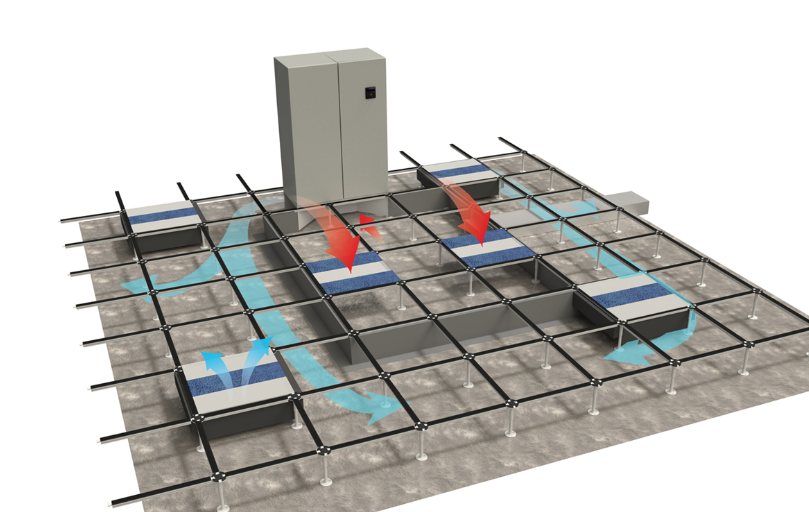NEWS TAG
brand
Efficient Methods To Improve Data Center More Energy efficiency
Optimizing the hardware and software in energy-hungry data centers is an important starting point for increasing energy efficiency. But there are other ways to work more energy-efficiently: On the one hand, by improving the infrastructure, on the other hand, through intelligent energy management.

Data Center Infrastructure Improvement
Cool Properly
Proper cooling of the data center is one of the essential keys to reducing energy consumption. IT companies such as Google or Facebook have therefore already opened large data centers on the edge of the Arctic Circle in Scandinavia in order to be able to cool with outside air without refrigeration machines. Local companies also have simpler methods available. A central measure is the optimal control of the air flows. This is how the warm and cold air flows can be separated from one another:
Position the warm backs of the server racks
Direct the cold supply air into the individual server racks via a raised floor. These double floors consist of removable floor panels that rest on adjustable underframes. It is ideal for the cold air supply if the server cabling is routed above the racks.
Other options are cooling with outside air, cool groundwater or geothermal energy (use of environmental energy).
Optimal operating temperature
Server rooms no longer have to be cooled to below 20 ° C. Data centers should be operated at the temperature recommended by the manufacturer - today this is often between 25 and 30 ° C. Each additional degree reduces the electricity costs for air conditioning by three to four percent.
Uninterruptible Power Supply
An uninterruptible power supply (UPS) ensures fail-safe operation of the data center. The electricity is converted twice:
The alternating current from the grid is converted into direct current so that it can be stored in a battery.
In order to supply the IT hardware, it must then be converted back into alternating current.
With this double conversion, there is inevitably a loss of energy. Those responsible for IT should take care to keep these losses as low as possible. The efficient conversion is measured via the so-called efficiency. This should be 95 percent or higher; So at least 95 percent of the original alternating current should be available from the uninterruptible power supply.
Consolidation and Virtualization
Especially in smaller data centers, the infrastructure often uses more than half of the total energy requirement. It is advisable to combine smaller data centers into a larger unit (consolidation). Because the larger the number of servers, the higher their energy consumption.
With virtualization, different operating systems are run in parallel on an otherwise low-capacity server. This also leads to a significantly more efficient use of the server.
Outsourcing and Server Housing
With outsourcing, server services are operated on the server of an external service provider. It is worth checking whether this is cheaper than running and maintaining your own servers. Another variant is server housing (also called colocation). Here, external service providers do not provide the server, but the infrastructure required for setting up and operating the company's own server.
Improved Data Center Energy Management
Building Planning
In the case of a data center, the building envelope must above all meet security aspects. Heating is not required - the waste heat from the devices is sufficient. In summer, suitable thermal insulation is important so that the rooms do not heat up too much from the outside. Windows should generally be avoided in data centers.
Waste Heat Recovery
The use of waste heat from data centers offers a potential that is still underestimated. Instead of letting the warm exhaust air fizzle out, it can be used to heat offices or other areas of the building. This can make a noticeable contribution to saving energy and reducing heating costs. This potential could become even greater in the future: Because servers are becoming more and more powerful, the temperature in the server rooms tends to rise; this means that more and more potential waste heat is available.
Monitoring
It is ideal if the measures to increase energy efficiency in the data center are integrated into a comprehensive energy management system for the entire company. The basis for energy management in the data center is reliable data on energy consumption, the usage structure and external weather conditions in order to use the possibilities of free cooling. It is also helpful to set up systematic monitoring and define suitable key figures. An energy consultant and experienced data center operator should be consulted who can design an overall concept tailored to the company.
